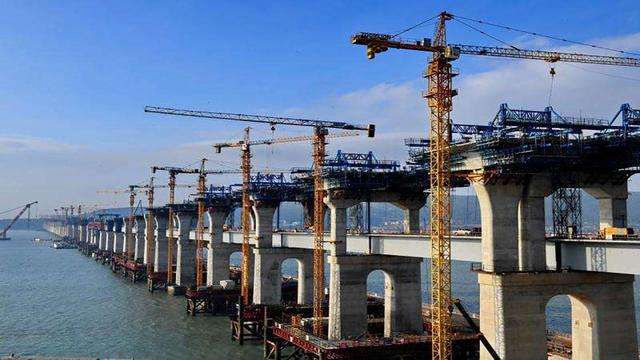What do governments do best, and are most likely to promote, when the economy falters? The lesson we learned from the Great Depression and Japan's lost 30 years: building, overhauling infrastructure.
"Building a Better America" was president Joe Biden's slogan after the House of Representatives passed a historic $1.2 trillion infrastructure bill. It is America's biggest infrastructure investment since Dwight Eisenhower developed the interstate highway system in the 1950s. AT&T CEO John Stankey predicts 2022 will be a big year for infrastructure investment in the United States. Mr Biden said the US was on the verge of an "infrastructure decade" and a decade of "long-term prosperity".
On December 1, the European Commission approved a plan for outward investment in infrastructure, which European Commission President Von der Leyen described as one of the eu's key external economic policies for the future. The EU's "global gateway" initiative, with a total investment of more than 300 billion euros, hopes to compete with China and the United States in the field of infrastructure.

On December 11th China's National Development and Reform Commission (NDRC) called for a "modest advance" in infrastructure investment.
Looking back at history, after a long period of rapid economic development with the help of scientific progress and technological breakthroughs, the economy would enter a stage of steady growth or even decline. At this stage, as the economic pie cannot continue to grow, all classes grab limited benefits through excessive competition. In this process, the class with a strong position will gain more benefits, which will further widen the gap between the rich and the poor, the division of class, and social unrest. In order to bridge these widening contradictions and maintain economic stability and orderly social structure, artificially increasing employment and increasing government intervention has been the routine operation of market economy countries in the past 100 years.
Experience has shown that the best way to stabilise an economy in a downturn is to build infrastructure, as may now be the case in many countries. However, it should also be clear that building infrastructure is more sustainable for promoting economic development. Nearly 90 years ago, In response to the unemployment rate of 25 percent in 1933, President Franklin D. Roosevelt launched the New Deal, a cash-for-work program for infrastructure construction. In 1935, franklin Roosevelt, introduced a public works progress administration, contains almost all can think of is beneficial to the public of the project: highway, curing environment, water conservancy facilities, maintain public health and rebuilding forest, control flood, etc., and even the stray dogs who stand, libraries, and looks at the time the content of the "eye candy". If Roosevelt's New Deal experience is anything to go by, we can certainly broaden the concept of infrastructure investment. Libraries, museums, national parks and even shelters for stray dogs are far from saturated in China, and even scarce by 21st-century standards.
Feng Beilin, deputy director of the Financial Research Center at the Chinese Academy of Fiscal Sciences, said the scope of infrastructure investment proposed by the CENTRAL government in 2022 can be expanded and upgraded, and should focus on areas such as 5G, artificial intelligence, smart cities and green investment to strengthen weak links. The so-called "moderately advanced" means that the technical standards of infrastructure construction will be raised, and the level of technological and intelligent construction will be made higher. The corresponding investment will be greater, and the long-term sustainable driving force of the economy will be stronger.

The economic development experience of various countries shows that strengthening roads, ports, power grids and information and data infrastructure is one of the key measures to create opportunities and promote economic development. First, the pulling effect of infrastructure investment projects on the economy is mainly reflected in stimulating the demand of upstream and downstream industries, such as steel bar, cement, machinery, informatization and digitalization, as well as directly providing jobs. Second, infrastructure construction itself can promote economic growth, improve the speed of logistics, increase the income of employed people and stimulate consumption. Third, upgrade the concept of infrastructure investment and promote infrastructure that provides sustainable impetus for the next step of economic development. In order to ensure stable social and economic development, governments around the world are making efforts to create more jobs and maintain stable income and basic living conditions for more people amid waves of COVID-19. It can be said that stimulating infrastructure construction is a practical measure to counter the economic downturn under the global epidemic. But there is also a need to take a longer view of the infrastructure investment philosophy.

